There are always those who innovate in art, opening new horizons and inspiring others to be bold and creative. In the world of tattooing, one of these unparalleled masters is Yana Laguta. Yana's interest in subtlety and elegance led her to use just one needle in her work — a decision that changed her style, making her work even finer and more graceful.
In this interview, we'll learn about Yana's journey into the world of tattooing: her creative methods, sources of inspiration, and pursuit of perfection.
Let's start with introductions and some traditional questions. Tell us a bit about yourself. Where are you from, and where do you work now?
- I am from Russia, from Saint Petersburg. For the past three years, I have been actively traveling, working in Europe, and occasionally returning to Russia.

What led you to tattooing? Who was your teacher? Tell us about it.
- My whole life has always been connected with creativity, and I came into the world of tattooing 6 years ago. It was almost impossible to find a school or courses on tattooing back then; it was not developed at all. However, I was lucky to find a tattoo artist girl whom I had been following on Instagram for quite some time. Then she opened her studio in the center of St. Petersburg and announced in her stories that she was looking for students to teach them in her own studio. In the right place at the right time. That's how I still remember my luck in finding my teacher and the tattoo studio where I continued to practice as a beginner after that training.
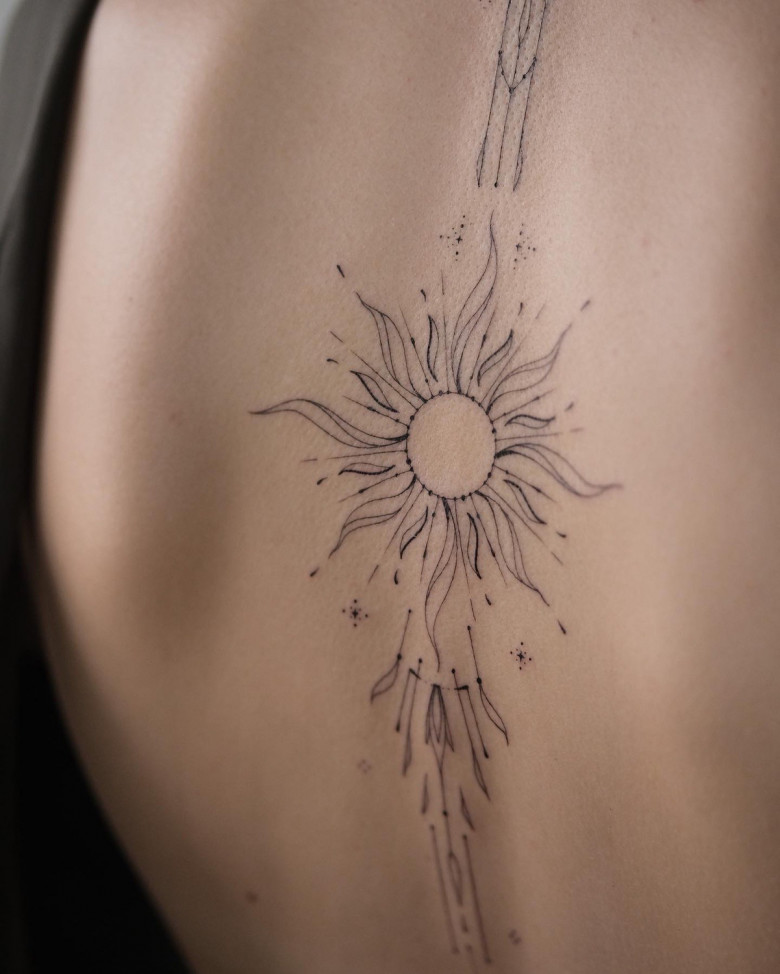
Is tattooing for you art, work, or something else?
- Tattooing is a lifestyle for me. I searched for myself for quite a long time in different areas, but it was tattooing that combined all my favorite parts of life: photography, design, travel, live communication with people. Before tattooing, I worked for 5 years in the field of graphic design, but I didn't feel free. With the advent of a new sphere in my life, my circle of acquaintances completely changed; I easily make new acquaintances, I often travel, and at the same time, I am really engaged in what brings me great pleasure.
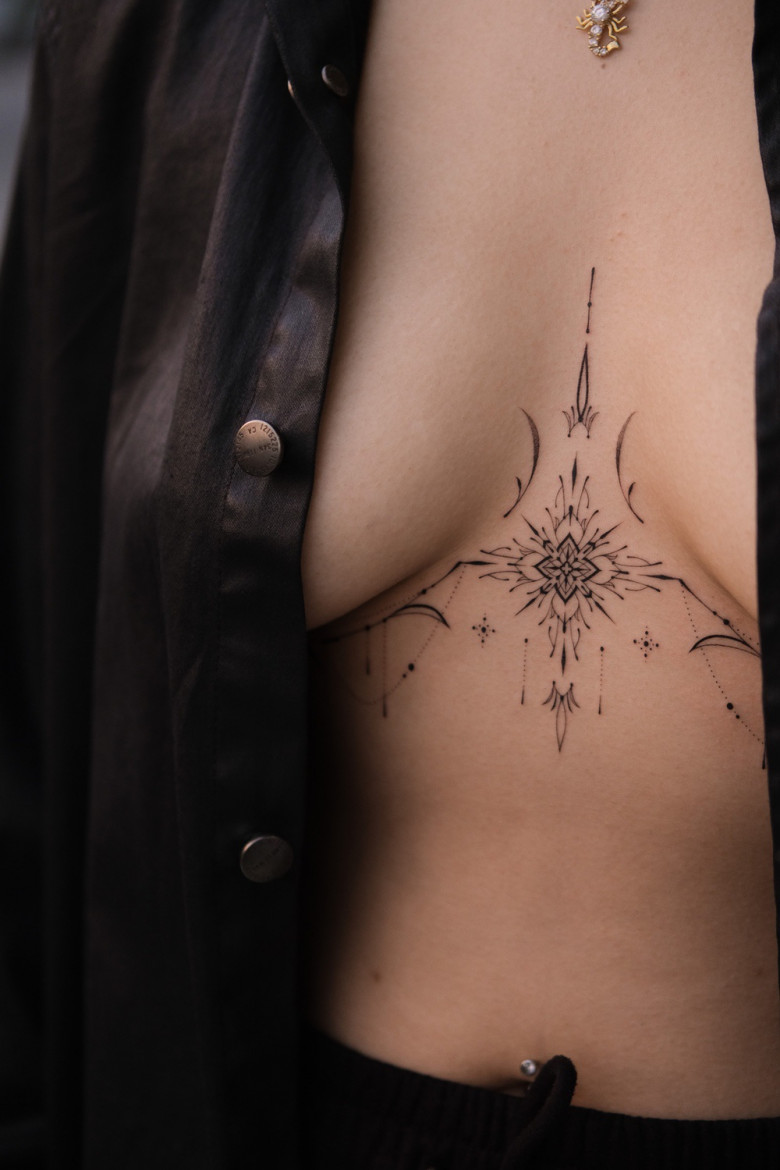
Your works are incredibly delicate, all thanks to your work with a single needle. Tell us why you chose the fine line style? And how did you come to work with a single needle?
- Initially, I knew for sure that I wanted to do something thin. Since childhood, I loved to draw thin graphic pictures with a black pen or pencil. Also, my education as a graphic designer left its mark. I worked in an advertising agency, collaborated with printing houses, in college developed my own fonts, and modular grids and design tools were my bible. It's all quite subtle and meticulous work, so I couldn't even imagine developing in any other style than graphics.
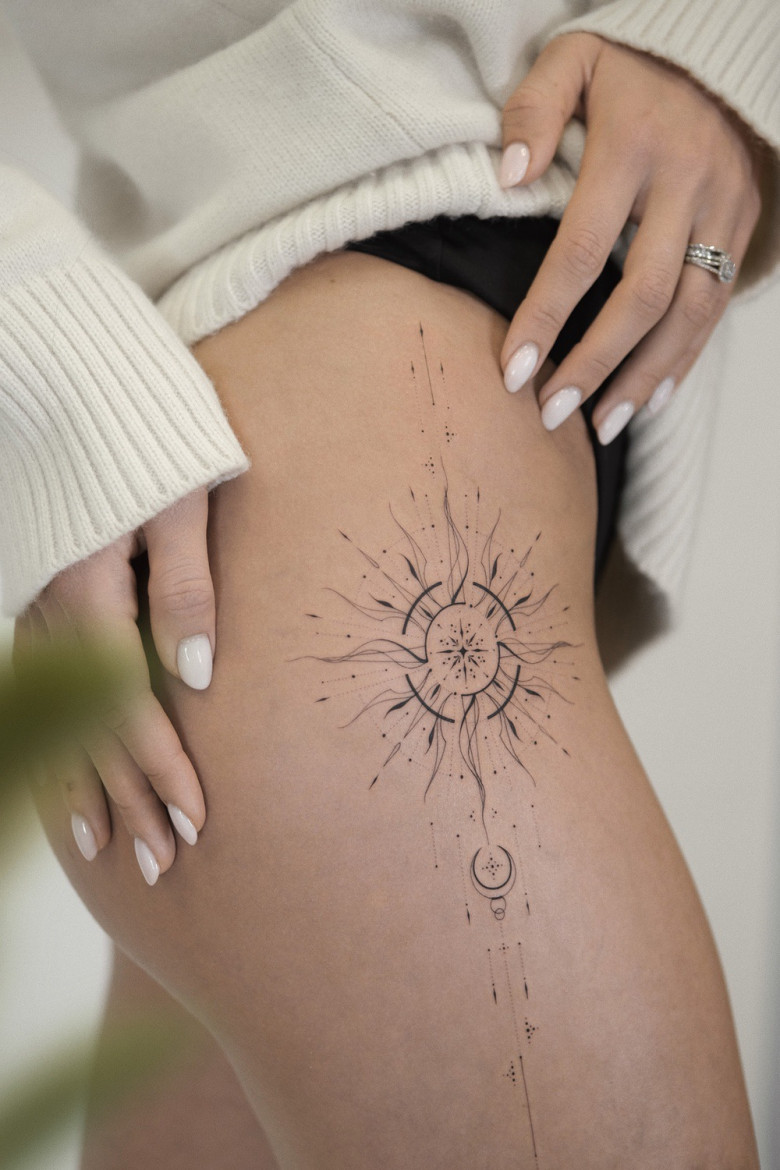
I also believe that the drawing style always strongly reflects the personality of the master himself. Many see me as quite calm but very gentle and feminine in nature, and that's exactly what I convey in my delicate works. At the very beginning, I worked with 5rl and 3rl needles, but at some point, I realized that I wanted to achieve even greater delicacy. Several needles in one cartridge quickly became blunt, I got tired of changing cartridges every half an hour, and I just tried one needle. I liked it.
Share an insight: how do such delicate works heal? Do you have a secret to preserving the longevity of fine tattoos?
- Tattoos heal wonderfully if you understand the technique of working with a thin needle and take into account the peculiarity of each type of skin. The most important point in working with thin tattoos is not to rush. Thin straight lines require colossal concentration, so such work requires a lot of time. Nevertheless, delicate tattoos sometimes require correction, and masters working in this style know this and always warn their clients about possible corrections. The client should understand the peculiarity of such tattoos in advance.
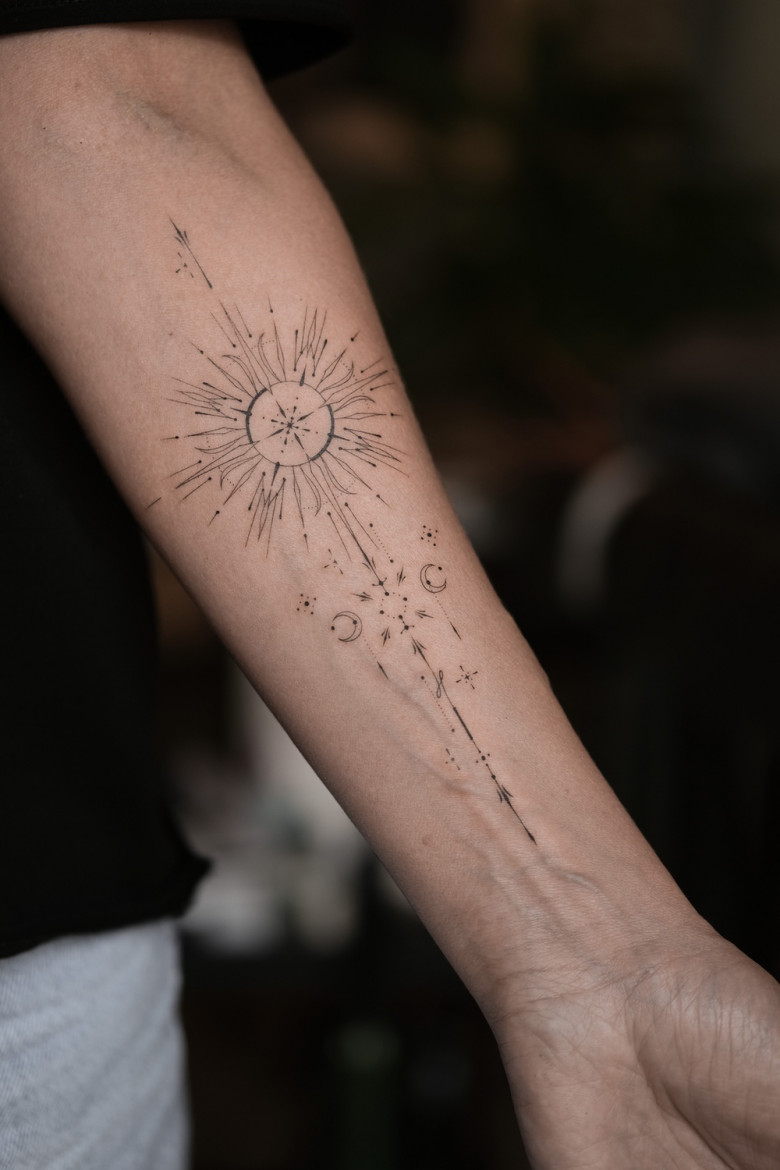
In your works, ornaments intertwine with botanical motifs and geometry, and some of them visually resemble elements of Thai Sak Yant. Tell us, how has your style developed? How would you characterize your work?
- I characterize my tattoos as delicate jewelry on the body. Designs rarely carry a specific meaning, but if a client wants to imbue the sketch with some significance, I am always happy to incorporate it into the design while maintaining my stylistic approach. Approximately a year after starting in the tattoo industry, a certain style began to emerge, and I realized that I enjoy creating geometric compositions with the addition of neo-Buddhist symbolism. After some time, I became slightly interested in astrology, which also influenced my designs, incorporating more celestial bodies, dots, lines, etc.
Currently, the compositions of my tattoos mainly consist of a large number of details and contrast between thick and thin lines. I enjoy exploring new forms of these ornaments and placing them in areas where women typically wear jewelry. Thus, tattoos become real decorations, but for life.
Judging by your Instagram, you travel constantly. Do new places influence your creativity? And where do you feel most comfortable?
- Traveling is an integral part of the work of a modern tattoo artist. Thanks to travels, we meet masters from other countries, communicate, share tricks of our techniques and work organization. Specifically in my case, I like to pay attention to how the process is organized within different studios and adopt it. This was especially useful during the time when I had my own studio in St. Petersburg. Nevertheless, traveling greatly expands the boundaries of consciousness and provides a new surge of inspiration. I greatly value the steadiness of life, tranquility, and routine, but even with a quality routine, my creative mind needs space for travel. This helps to prevent burnout.
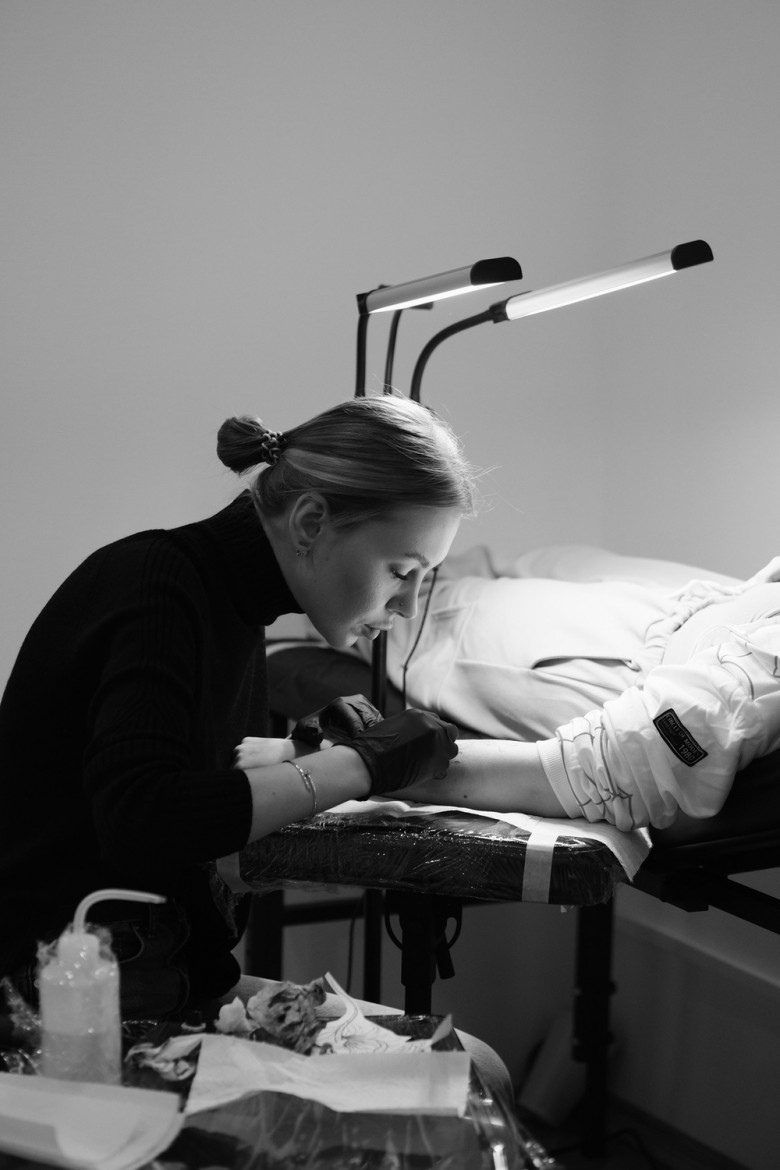
Do you keep statistics on how many countries people wear your tattoos in? And in which country do you think they are most popular?
- I would say that the fine line style, in general, is popular everywhere now; it's just more developed in some places than others. In my opinion, the European countries where thin tattoos are most loved are Germany, France, and the Netherlands.
Do you have favorite tattoos, clients, projects, or perhaps some unusual stories in your career?
- I am immensely pleased when men come to me for sessions. For me, this is rare because my designs are not suitable for every male image. Nevertheless, some men do appreciate the delicate touch in my works and want to have something from my creativity on them. In such cases, I try to make a more masculine version while still preserving my style. The result is always interesting, and these are usually my favorite projects.
At a time when tattoo artists worldwide complain about declining Instagram reach and statistics, it seems you're doing fine. Can you share your secret?
- There will always be something happening with algorithms and reach, unfortunately, it's impossible to keep up with. In my case, I simply try to do what I do on a regular basis. Consistency and regularity of content are the best things for promotion. Often, my works shoot to the top because I try not just to make tattoos, but to find interesting placements for them. Something atypical, places and forms that haven't been done before. It's these works that become trending, gather tens of thousands of likes, and insane reach. Along with this comes a new audience.
You recently launched the Single Needle course, which, judging by the description, is not just a course on how to make tattoos. So, who is it for?
- The Single Needle course is designed for practicing artists who want to make a leap in the quality of their work and learn to make fine lines using my techniques. The curriculum contains not only information about needles and tattoos but also about positioning in the modern tattoo market, how important and necessary it is to develop a personal brand, how to delegate work processes to focus on the important. For many years, I received requests for training, but I understood that I couldn't fit all my knowledge into just one workshop or even several days. In the course, I have systematically laid out all my knowledge accumulated over the years of my career. At the moment, I can confidently say that this is the best and most comprehensive educational product for tattoo artists, which includes all aspects of tattooist development.

What is the most important thing for you in your tattooing career? What goals do you set for yourself? Could you share your creative plans for the near future?
- Almost every other tattoo artist sees the opening of their own studio as the limit of their development ultimately. It's valid, but I would like to explore new facets of my creativity with each passing year. In the future, I would like to go beyond tattooing and collaborate with small or even global creative brands, or perhaps create my own products. I love jewelry so much that I could combine tattoos with jewelry pieces. I don't want to predict; usually, everything happens unexpectedly and at the right time.
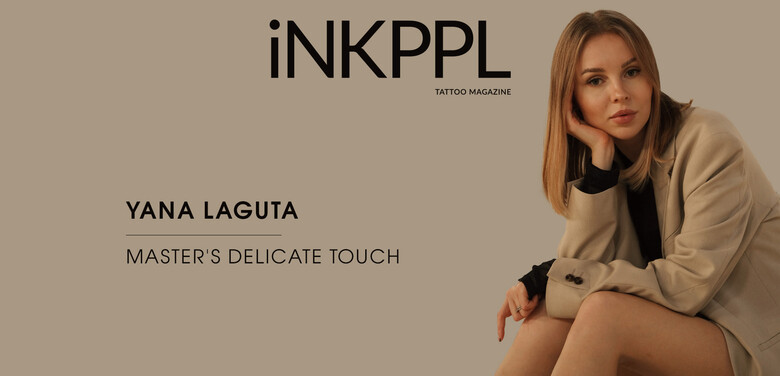









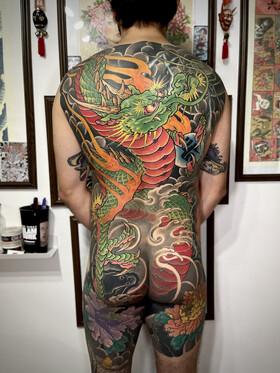


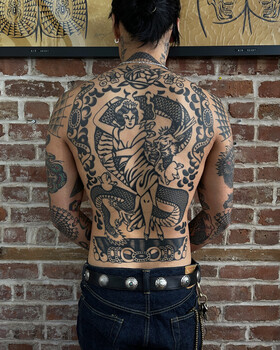
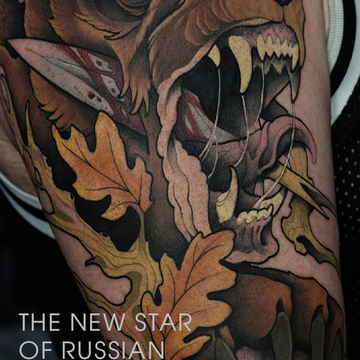
Comments (3)